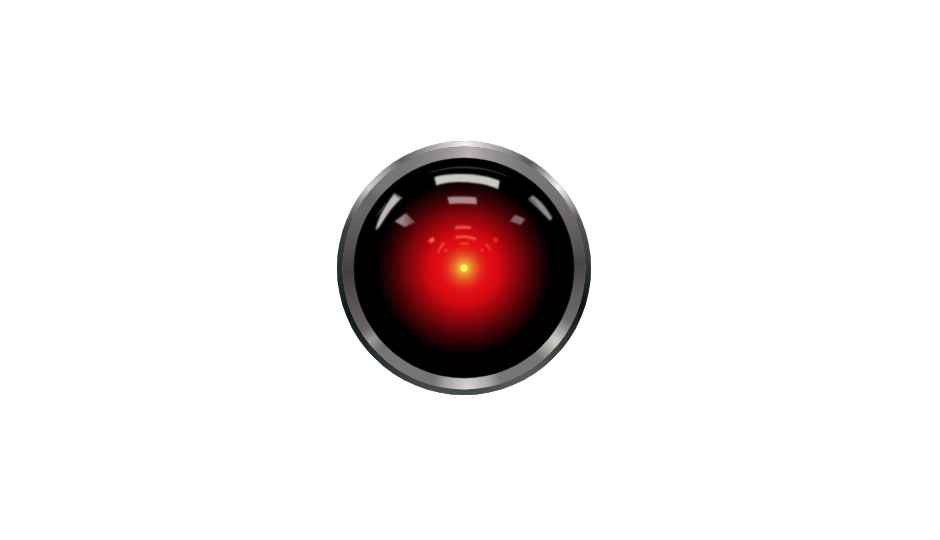 Do you remember the fictional supercomputer HAL 9000 from the popular science-fiction film, ‘2001: A Space Odyssey’? It was best known for killing off the astronauts in the film. Scientists in the US are currently working on an artificial intelligence-based computer that’s similar to the HAL 9000. You could call it a replica in some way. But there’s a crucial difference: this HAL 9000 that’s being built will keep astronauts alive; not kill them. Pete Bonasso, an artificial intelligence researcher at TRACLabs Inc. in Webster, Texas first saw the film when he was in his fourth year at West Point. “When I saw '2001,' I knew I had to make the computer into another being, a being like HAL 9000,” he wrote in his study that’s published in the Science Robotics journal online. His study’s abstract reads, “An intelligent agent, like HAL 9000, can plan and manage activities for a planetary base and can interact with users through a dialog management system.” The HAL 9000-inspired computer that Bonasso and his colleagues are developing now is called the “cognitive architecture for space agents”, or simply, “CASE”. According to a recent report by Space.com, CASE is made up of three essential layers: the first is a constantly running control layer that operates robotic limbs like eyes and arms. The second layer performs pre-programmed routine activities like controlling oxygen and carbon dioxide levels, sending out rovers for retrieval of planetary rocks, etc. The third and last layer contains an automatic planning software that determines how to achieve CASE’s programmed goals for the day and their priority. It’s capable of rescheduling activities in case of emergencies like broken motors and gas leaks. All three layers are connected to an ontology server that has a vast database and the ability to apply reason to the data contained. For instance, changing the location of a toolbox will cause the location of all the elements inside the toolbox to change. And to prevent an incident like the one in the film, where the computer kills all the astronauts, CASE is designed to carry out functions only after getting necessary permissions from humans. The scientists are now apparently collaborating with NASA to work on ‘analogs’, which are imaginary places space-research volunteers pretend to work in. The goal is to incorporate CASE in these analogs to see how the software can help in improving space expeditions in the future.
Do you remember the fictional supercomputer HAL 9000 from the popular science-fiction film, ‘2001: A Space Odyssey’? It was best known for killing off the astronauts in the film. Scientists in the US are currently working on an artificial intelligence-based computer that’s similar to the HAL 9000. You could call it a replica in some way. But there’s a crucial difference: this HAL 9000 that’s being built will keep astronauts alive; not kill them. Pete Bonasso, an artificial intelligence researcher at TRACLabs Inc. in Webster, Texas first saw the film when he was in his fourth year at West Point. “When I saw '2001,' I knew I had to make the computer into another being, a being like HAL 9000,” he wrote in his study that’s published in the Science Robotics journal online. His study’s abstract reads, “An intelligent agent, like HAL 9000, can plan and manage activities for a planetary base and can interact with users through a dialog management system.” The HAL 9000-inspired computer that Bonasso and his colleagues are developing now is called the “cognitive architecture for space agents”, or simply, “CASE”. According to a recent report by Space.com, CASE is made up of three essential layers: the first is a constantly running control layer that operates robotic limbs like eyes and arms. The second layer performs pre-programmed routine activities like controlling oxygen and carbon dioxide levels, sending out rovers for retrieval of planetary rocks, etc. The third and last layer contains an automatic planning software that determines how to achieve CASE’s programmed goals for the day and their priority. It’s capable of rescheduling activities in case of emergencies like broken motors and gas leaks. All three layers are connected to an ontology server that has a vast database and the ability to apply reason to the data contained. For instance, changing the location of a toolbox will cause the location of all the elements inside the toolbox to change. And to prevent an incident like the one in the film, where the computer kills all the astronauts, CASE is designed to carry out functions only after getting necessary permissions from humans. The scientists are now apparently collaborating with NASA to work on ‘analogs’, which are imaginary places space-research volunteers pretend to work in. The goal is to incorporate CASE in these analogs to see how the software can help in improving space expeditions in the future.from Latest Technology News https://ift.tt/2zmugxH









